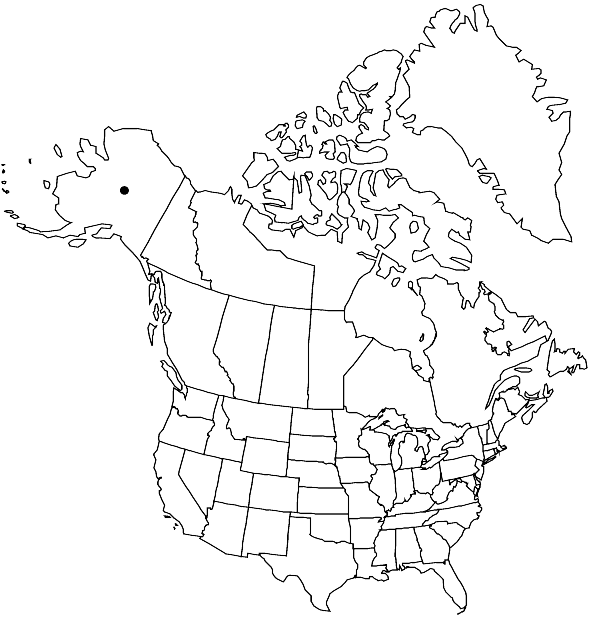Difference between revisions of "Bucklandiella afoninae"
in R. Ochyra et al., Cens. Cat. Polish Mosses, 144. 2003,.
FNA>Volume Importer |
imported>Volume Importer |
||
| (5 intermediate revisions by 2 users not shown) | |||
| Line 1: | Line 1: | ||
{{Treatment/ID | {{Treatment/ID | ||
|accepted_name=Bucklandiella afoninae | |accepted_name=Bucklandiella afoninae | ||
| − | |accepted_authority=(Frisvoll) Bednarek-Ochyra & Ochyra | + | |accepted_authority=(Frisvoll) Bednarek-Ochyra & Ochyra |
|publications={{Treatment/Publication | |publications={{Treatment/Publication | ||
|title=in R. Ochyra et al., Cens. Cat. Polish Mosses, | |title=in R. Ochyra et al., Cens. Cat. Polish Mosses, | ||
|place=144. 2003, | |place=144. 2003, | ||
}} | }} | ||
| − | |basionyms={{Treatment/ID/ | + | |basionyms={{Treatment/ID/Basionym |
|name=Racomitrium afoninae | |name=Racomitrium afoninae | ||
|authority=Frisvoll | |authority=Frisvoll | ||
| + | |rank=species | ||
| + | |publication_title=J. Bryol. | ||
| + | |publication_place=15: 275, figs. 1, 2. 1988 | ||
}} | }} | ||
|synonyms= | |synonyms= | ||
| Line 33: | Line 36: | ||
-->{{#Taxon: | -->{{#Taxon: | ||
name=Bucklandiella afoninae | name=Bucklandiella afoninae | ||
| − | + | |authority=(Frisvoll) Bednarek-Ochyra & Ochyra | |
| − | |authority=(Frisvoll) Bednarek-Ochyra & Ochyra | ||
|rank=species | |rank=species | ||
|parent rank=section | |parent rank=section | ||
| Line 46: | Line 48: | ||
|publication year= | |publication year= | ||
|special status= | |special status= | ||
| − | |source xml=https:// | + | |source xml=https://bitbucket.org/aafc-mbb/fna-data-curation/src/2e0870ddd59836b60bcf96646a41e87ea5a5943a/coarse_grained_fna_xml/V27/V27_375.xml |
|subfamily=Grimmiaceae subfam. Racomitrioideae | |subfamily=Grimmiaceae subfam. Racomitrioideae | ||
|genus=Bucklandiella | |genus=Bucklandiella | ||
Latest revision as of 21:25, 5 November 2020
Plants fairly large, rather coarse, densely caespitose, olive green distally, brownish or blackish proximally. Stems erect-ascending, 2–5 cm, moderately, irregularly branched. Leaves loosely appressed, spirally twisted around the stem or somewhat contorted when dry, erect-spreading when moist, lanceolate, (2–)2.3–2.7(–2.9) × 0.5–0.6 mm, muticous or with a short, to 0.4 mm, hyaline, bluntly denticulate to crenulate hair-point; margins broadly recurved to mid-leaf or 3/4 way up the leaf on one side, plane or narrowly recurved in the broadest part on the other side, variously 1–2-stratose in 1 cell row distally; costa percurrent, 80–90 µm wide basally, 55–75 µm wide distally, strongly convex on the abaxial side, 3-stratose in the base with 4(–5) enlarged adaxial cells, 3–4-stratose in the middle with 3–4 large adaxial cells and 2–3-stratose distally with 2 adaxial cells; laminal cells 1-stratose with occasional 2-stratose patched near the apex, smooth or slightly pseudopapillose; distal and median cells rectangular, 25–50 × 10–12 µm, strongly sinuose-nodulose and thick-walled; basal cells long-rectangular to linear, 50–90 × 10–12 µm, with strongly porose and incrassate lateral walls, to 7 µm thick; alar cells undifferentiated; basal marginal cells esinuose, moderately thick-walled, long-rectangular to linear, 50–100 × 5–8 µm, hyaline, forming a transparent border extending to the broadest part of the leaf. Sterile.
Habitat: Rocky ground in tundra
Distribution

Alaska, n Asia (Chukotka).
Discussion
Of conservation concern.
Bucklandiella afoninae is the rarest species of the genus, known in the flora area only from a single site from western Alaska (Seaward Peninsula), which corresponds to several localities of the species in Chukotka in arctic Russia. Although it is known only in the barren state, it fits well into the concept of sect. Marginatae on account of its linear basal cells with strongly incrassate and porose longitudinal walls, and the presence of a distinct basal marginal border that is composed of exceptionally long, mostly linear cells. Such leaf border is unknown in any other species of the genus in the flora area. The other exceptional character of this species is spirally twisted leaves, and such leaf arrangement is known only in two austral species of Bucklandiella, B. emersa and B. rupestris.
Selected References
None.